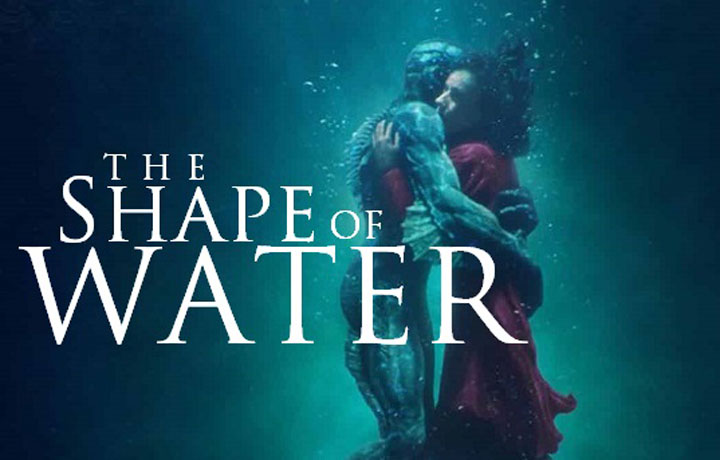‘The Shape of Water’ Redefines Romance
February 18, 2018
Dinner and a trip to the cinema are a Valentine’s Day staple, but late in 2017, director and writer Guillermo del Toro added a new twist to the holiday tradition by writing the heart-throb leading man as…the Creature from the Black Lagoon? Not quite, but he came pretty close with Doug Jones in an amphibian-man suit as the love interest in his newest film, The Shape of Water, up for 13 Oscar nominations including Best Picture, Best Actress, and Best Director. Despite the unconventional take on an age-old Beauty and the Beast narrative, audiences and critics alike were awed by the dazzling love story put to screen in glittering shades of blue and green.
Like many of del Toro’s previous films, The Shape of Water is, at its heart, a fairy-tale written for adults. Set during the Cold War in the year 1962, it follows a woman named Elisa (played by Sally Hawkins) working as a custodian at a secret government laboratory who accidentally stumbles upon a humanoid amphibian captured in the hopes of using it to advance the US in the Space Race. Elisa forms an unlikely bond with the creature (brought to life by Doug Jones) based on their mutual understanding as outcasts- – he as literally inhuman and she being unable to speak verbally — and their relationship deepens as he learns sign language by watching her conversations with coworkers through the glass of his enclosure. With opposition from both the Soviets and Elisa’s superiors in the lab, what ensues is a heist to return the creature to its natural habitat before his hiding place is discovered.
The Shape of Water tells its story through dichotomies ranging from subtle to unbearably direct: the noisiness of the laboratory Elisa works in compared to her silent interactions with the creature, the blues dominating her apartment contrasted with yellow hues in every other building, tributes to old Hollywood next to jabs at the ugliness of the corporate side to the ‘60s, graphic violence in between artfully playful depictions of compassion transcending the boundaries that separate two species, and, if one pays attention to the action beyond the protagonists, the boundaries between race and nationality. Del Toro masterfully eases the audience between two extremes without coming across as shallow, channeling the unquestioned tropes pervading a long history of mythos predating his work.
The cinematography itself exemplifies the movie’s major motifs; with not a single still-shot in the film, the constant and smooth camera movements allude to the ebb and flow of waves and gives a nod toward the recording techniques used in classic musicals enjoyed by Elisa and her neighbor, Giles (played by Richard Jenkins). Although spoken by characters divided into clear archetypal roles, the dialogue feels natural, and this extends to Elisa’s signing (although it should be noted that the American Sign Language (ASL) in the film follows English grammar structure). This is largely upheld by stunning performances from all actors involved, especially Octavia Spencer as Elisa’s best friend and workplace interpreter, Zelda. Spencer’s impressive portrayal won her a Golden Globe, BAFTA Award nomination, and Oscar nomination for Best Supporting Actress, and the reasons why are clear: she turns a supporting character into one of the most complex in the entire film. The candidness of the relationship between Giles and Elisa is augmented by the affection Jenkins gives his role, and I feel that the sturdy foundation del Toro was able to build his grand and whimsical story upon relies heavily on that bond. Michael Shannon creates a villain so easy to dislike and yet so reflective of deep-rooted American ideals that his story becomes uncomfortably compelling. Finally, we mustn’t leave out the leading man himself: Doug Jones plays a romantic lead with such grace and humanistic qualities that the absurd premise of a woman falling in love with an amphibian-man deity ceases to seem so outrageous. The often-underappreciated actor being able to do so under a full-body foam and latex suit, no less, is astounding.
However, as far-reaching as my praise for this movie is, I feel I must warn prospective movie-goers that the violence is quite graphic, although it is intentionally so. Del Toro contrasts the folk-tale-esque beauty of the story and the design elements used to carry it out with intense depictions of heavily-adult material, and while this works to bring duality into the film, the R-rating should be taken seriously as the movie’s content may not be suitable for all audience members.



